Brindle dog breeds: 11 breeds with these beautiful markings
Mesmerizing with their tiger-style markings, here are the breeds with the brindle gene
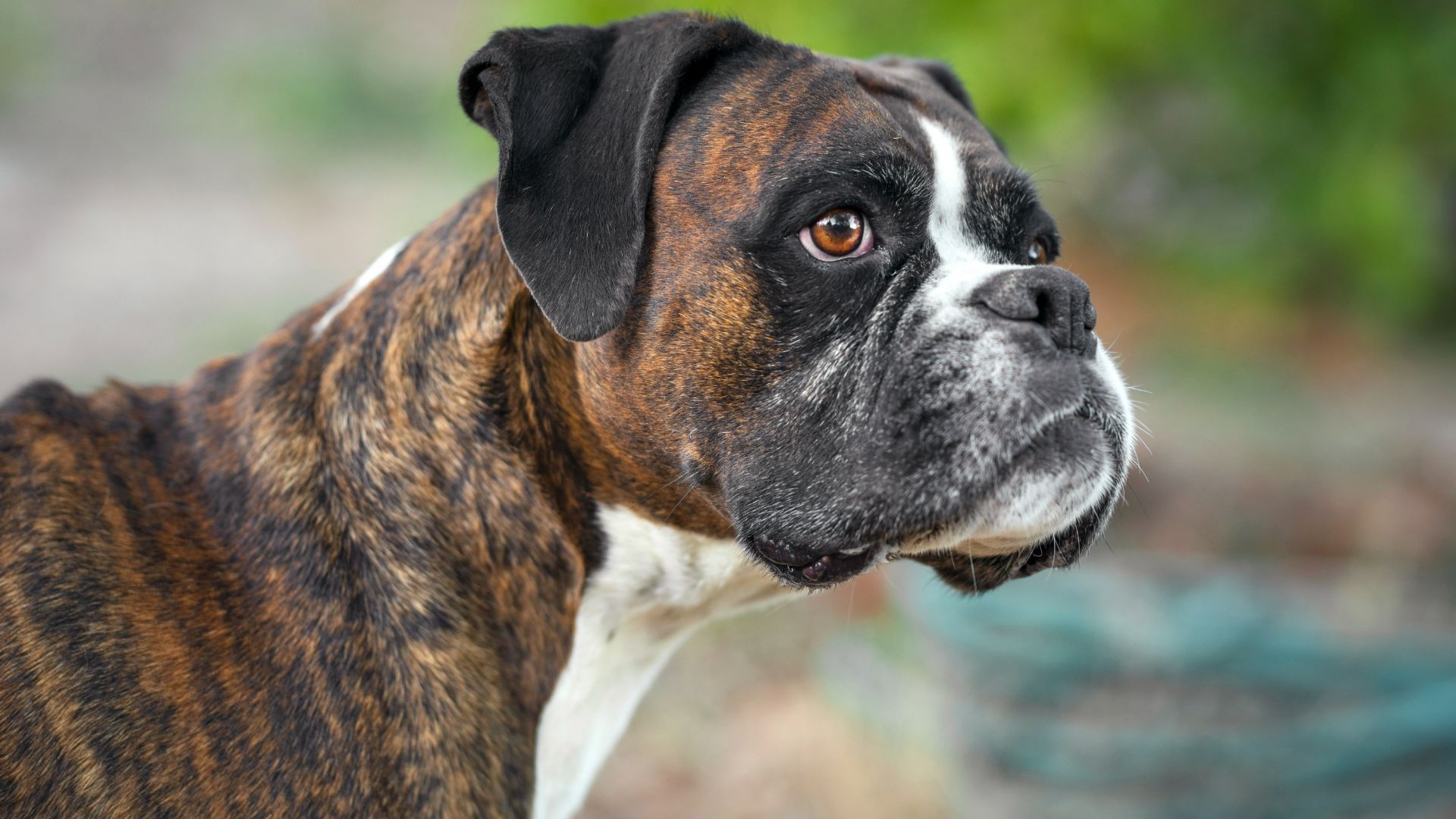
Brindle dog breeds boast captivating tiger-striped coat patterns that are passed down through a recessive gene. These beautiful coats come in blends of red, black, gray, and fawn colors.
Similar to the tortoise shell pattern in cats, vet, Dr Joanna Woodnutt describes this gene as complicated.
“It comes from a recessive gene but can also be changed by several other genes,” she says.
The brindle gene evolved naturally but was later purposefully bred in some dogs, especially those used for tracking and hunting. The brindle pattern lets dogs blend more easily into their environments.
We also spoke to Dr Rebecca MacMillan on the origins of the brindle gene and the role it played in breeding.
Brindle dog breeds
1. Great Dane
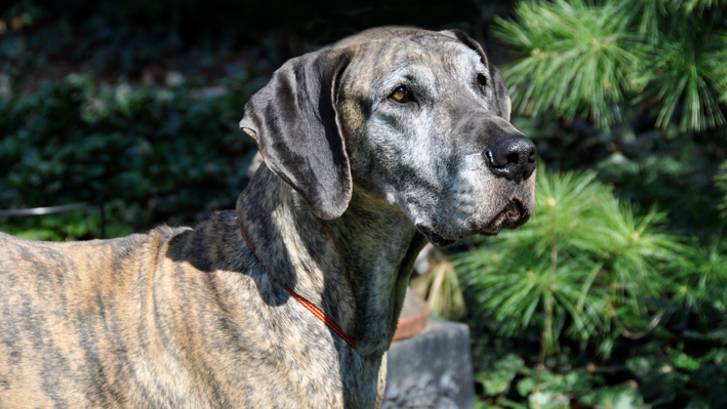
The majestic Great Dane is well-known for being a gentle giant who's fiercely loyal to his or her owners. Standing as tall as 32 inches at the shoulders, it's difficult to think of anything beyond their towering size, but their appearance also includes a range of distinctive colors, including black, blue, fawn, harlequin, mantle, merle, and brindle.
Arguably one of the most unique color patterns, the brindle Great Dane typically has jet black stripes upon a golden yellow coat.
Get the best advice, tips and top tech for your beloved Pets
2. Pit bull
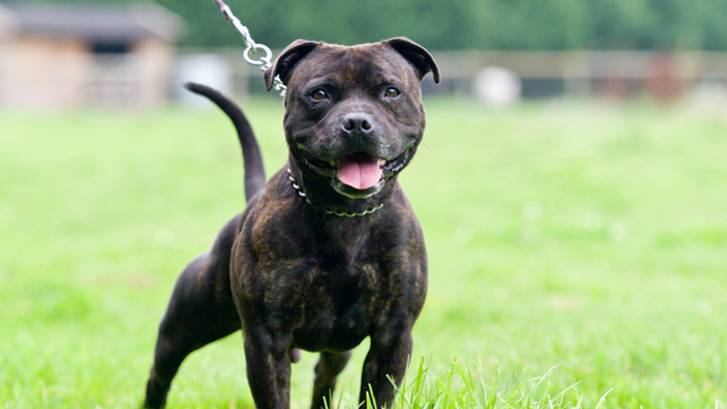
While there are a number of breeds that sit within the pit bull family, a brindle pit bull is typically an American Pitbull Terrier or a Staffordshire Bull Terrier that has a brindle coat.
While the base color ranges from a fawn to a dark brown color, the stripes can be either yellow and red or black and brown, almost giving them the appearance of a tabby cat.
3. Boxer
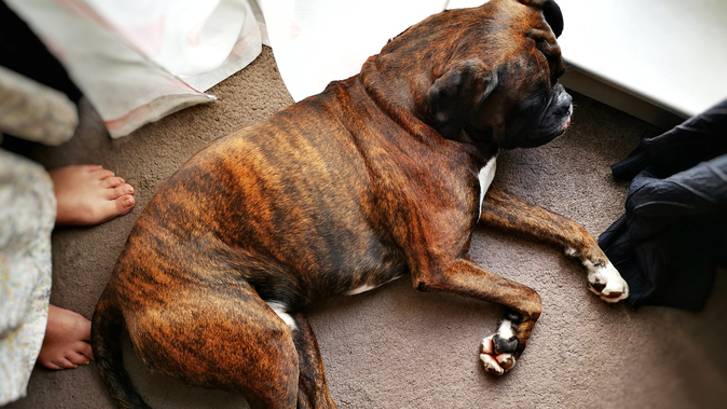
While it's common to think of a boxer being fawn or white in color, there are actually over 15 different combinations to their coat, including a brindle pattern. Typically, a boxer's brindle coat will be fawn-colored to the base, with light or dark striping. A boxer with a standard brindle coat is usually white on his chest, paws, and ankles, with a black muzzle.
Some boxers, however, are heavily striped which is commonly referred to as ‘reverse brindling’, but they still feature the trademark fawn base color with black stripes.
4. Greyhound
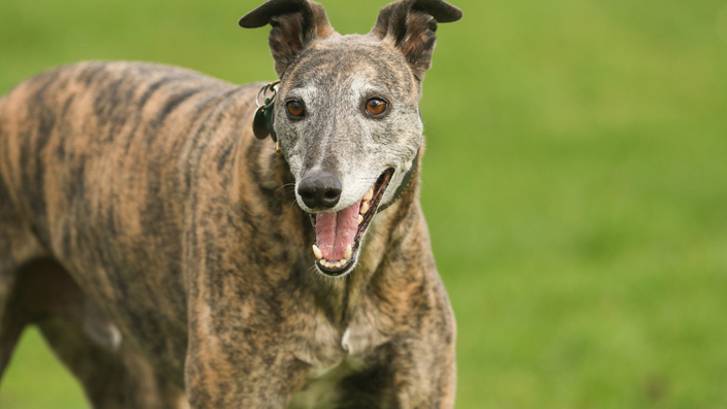
You may know them for their trademark narrow face, muscular bodies, and long skinny legs, but there's actually so much more to the greyhound's appearance than you think. For a start, they aren't always gray in color, as their name suggests.
In fact, a Greyhound can also be fawn, black, red, blue, or white-colored; there's actually a staggering 18 primary colors and 55 different color combinations.
While brindle on a greyhound is not common, there's a huge range of colored markings to be found on this popular breed.
5. French Bulldog
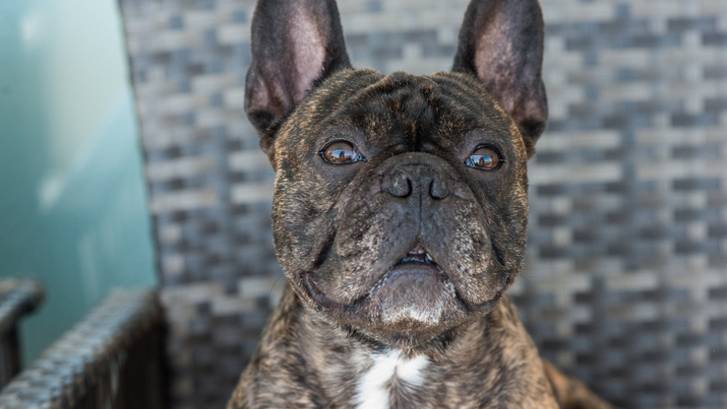
It's likely you think of a black-colored French Bulldog but this loveable breed actually comes in a few colors including fawn, white and brindle. A brindle Frenchie may be either light or dark-colored with some coats featuring the pattern all over, while others display it only in certain areas.
A well-known French Bulldog coat color is white and brindle, which typically has a white or cream colored coat with patches of dark-colored hair.
6. Basenji
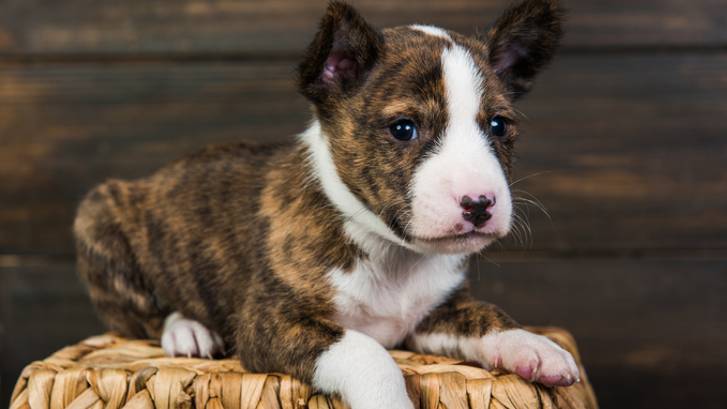
A breed of hunting dog that originated in central Africa, the basenji has a short and fine coat that typically features a few colors. These include chestnut red, black, tricolor or brindle, with brindle usually consisting of black stripes on a chestnut red base.
The breed can also be tricolor with brindle markings, which is frequently referred to as 'trindle' by basenji breeders.
7. Cardigan Welsh Corgi
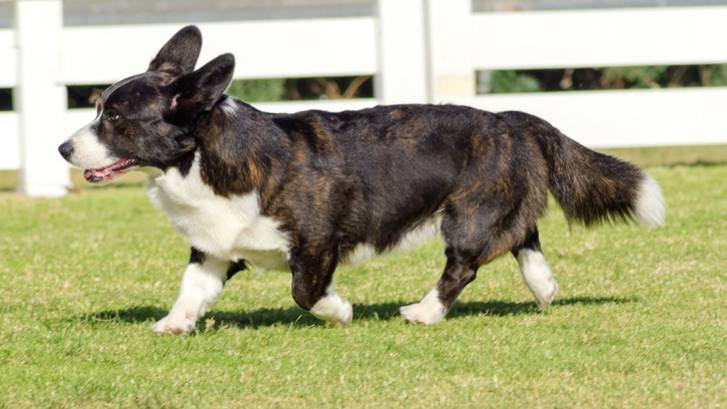
Thanks to Her Majesty The Queen, it's most common to think of the Pembroke Welsh Corgi with its warm red color, but there are actually multiple colors and markings amongst all the Corgi sub-breeds.
One of the most unique in terms of coat pattern is the Cardigan Welsh Corgi, which can feature a brindle pattern. Their coat can come in shades of red, sable, and black, with or without tan or brindle points.
8. Akita
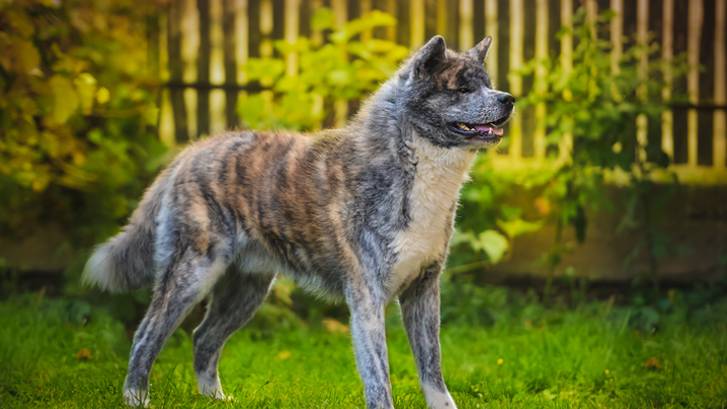
Perhaps the most striking and lesser-known version of the majestic akita breed, a brindle Akita typically features black and brown stripes, but it can also be white or fawn.
Their unique appearance may also be attributed to the fact that the breed itself is not widely owned; while their adorable good looks have made them popular stars across social media, they can be a challenging dog breed for first-time owners.
9. Plott Hound
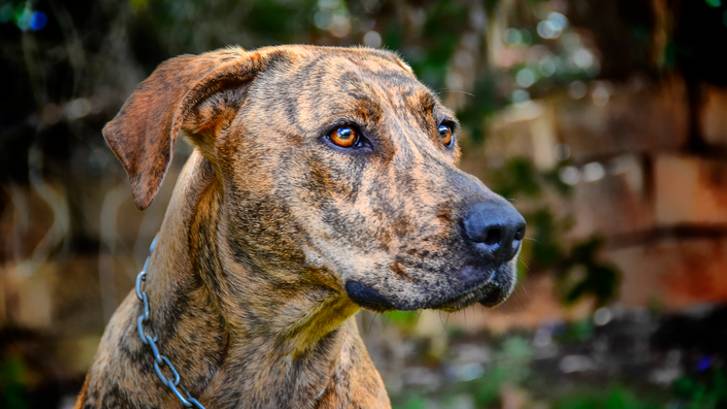
While many dogs are better known for colors and markings other than brindle, the Plott Hound mostly features this. Their thick double coat, developed as a way to protect them from the cold weather in the mountains of North Carolina, is often tan, chocolate, yellow, orange, gray, blue, liver, brown, or black in color.
More unusually, you may find them with a buckskin color that ranges from a light cream to hues of red and golden brown.
If you've never heard of this breed, that's because they're rare and are most commonly found as working dogs rather than kept as pets.
10. English Mastiff

The English Mastiff may be a large breed dog out there, but they're also one of the most loveable. While there are several types of mastiff, surprisingly, a brindle coat is not that common.
While any mastiff can feature a brindle coat, it's the boerboel that's most likely to feature the distinctive markings.
Usually, a brindle mastiff features a base color of either apricot or fawn, while their entire body is covered in black stripes. The breed also has a black muzzle, ears, eye rims, and snout.
11. Whippet
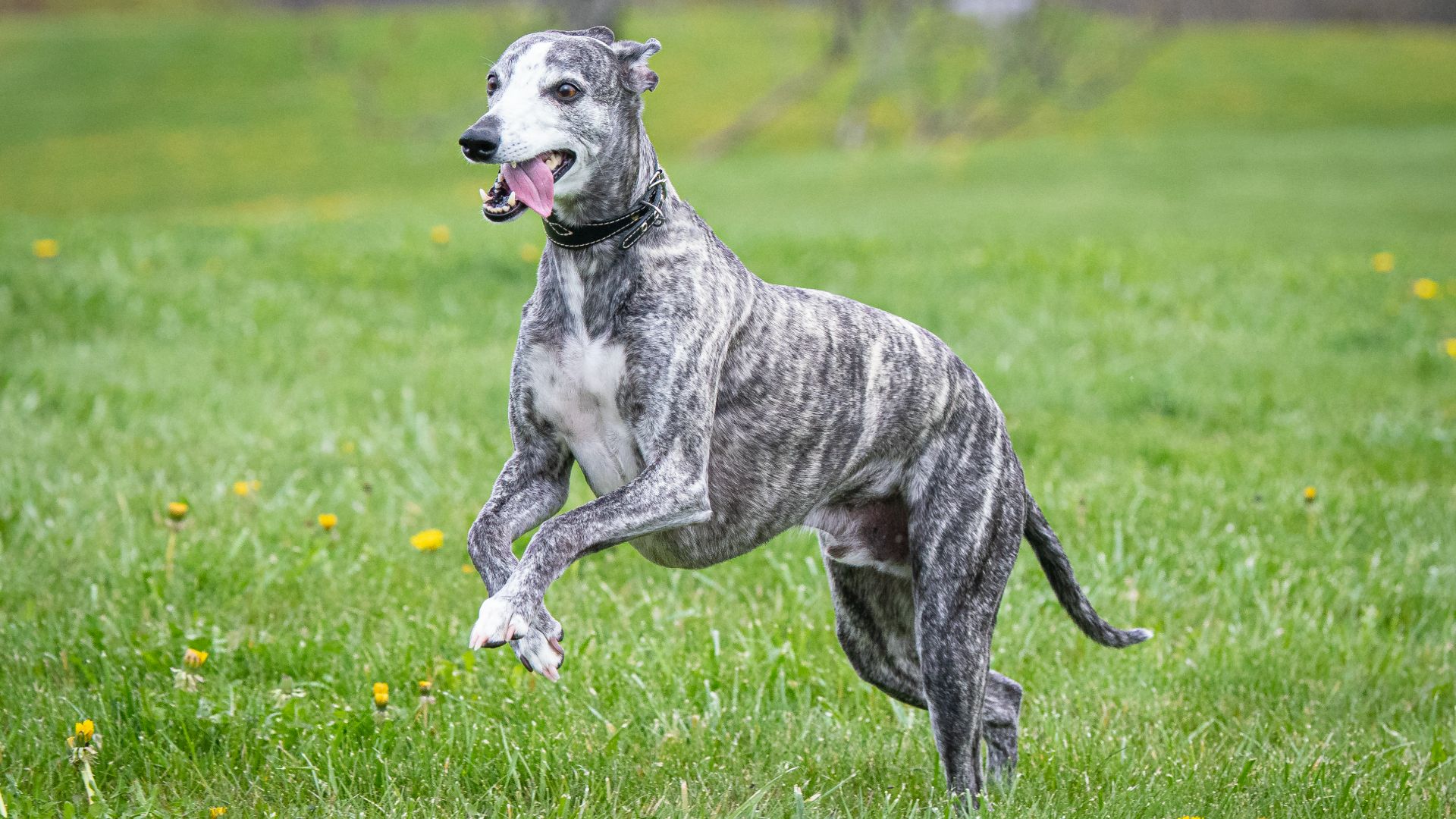
The whippet is sleek and graceful and similar to the greyhound, just smaller. Whippets are one of the fastest dog breeds, with speeds topping at 35 mph.
Whippets are loyal dogs who bond closely with their owners. They do well with homes with lots of backyard space but can also do well in apartments as long as they are getting plenty of exercise.
Whippets are also very smart and need plenty of mental stimulation to keep them from getting bored.
Where does the brindle color of dogs come from?
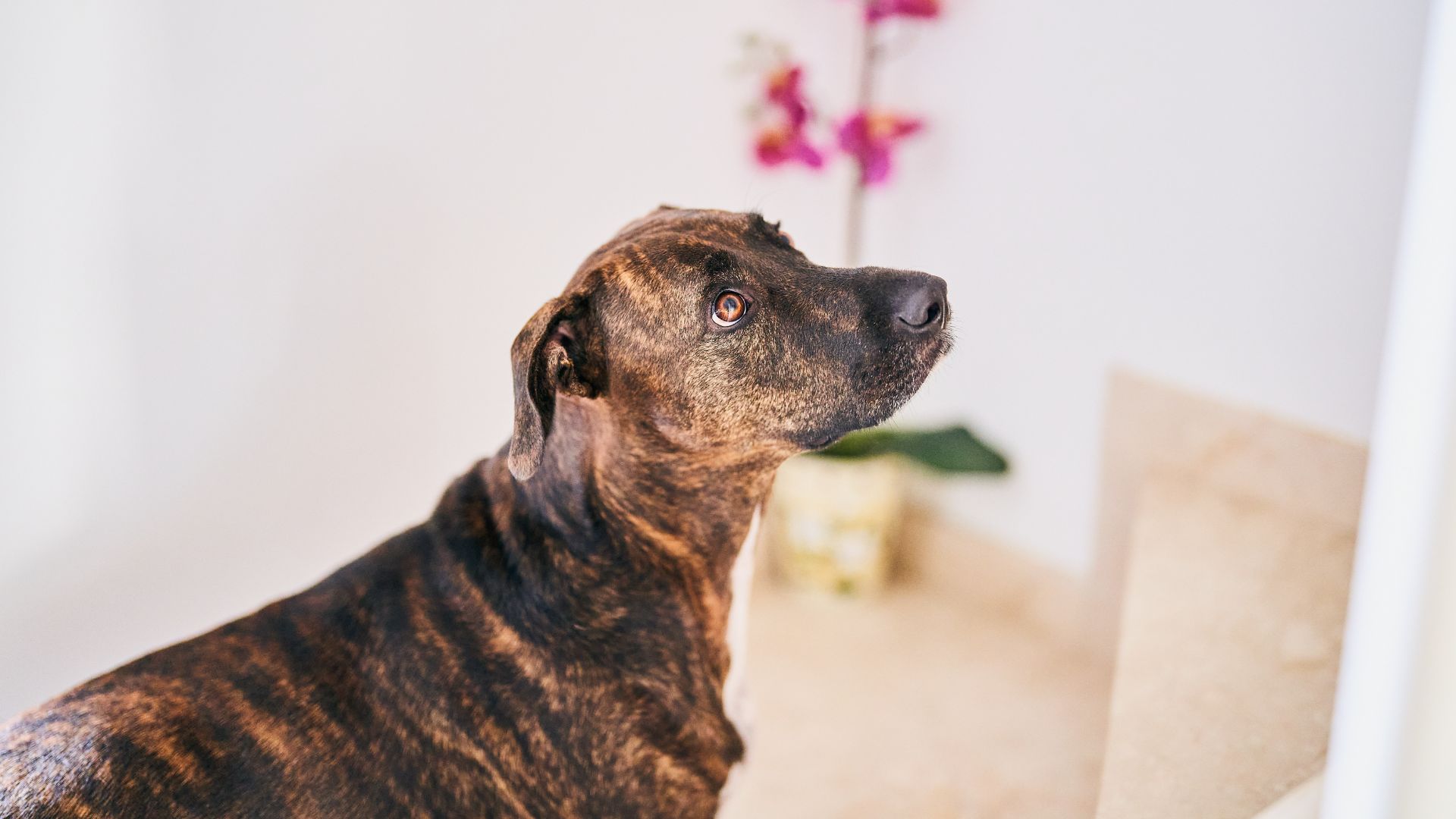
Understanding the brindle coat color in dogs can be a bit complex, but Dr Woodnut was able to help us break it down for you. The color comes from a recessive gene, which means it needs to be inherited from both parents for the dog to have a brindle coat. However, other genes can also influence the appearance of the coat.
At the K locus, which is a specific location in the genetic code, there are three possible genes: black (dominant), brindle (somewhat recessive), and non-solid black (very recessive). Another important locus, called the A locus, comes into play when the dominant black gene is not present at the K locus.
Dogs with one or two black genes will express that gene strongly because it's highly dominant. On the other hand, dogs with a brindle gene and a non-solid black gene, or two brindle genes, will have a brindle coat. This means that any red in the coat will have brindle markings, but the amount of red depends on the gene expressed at the A locus and other genes that affect how the black and red pigments are shown.
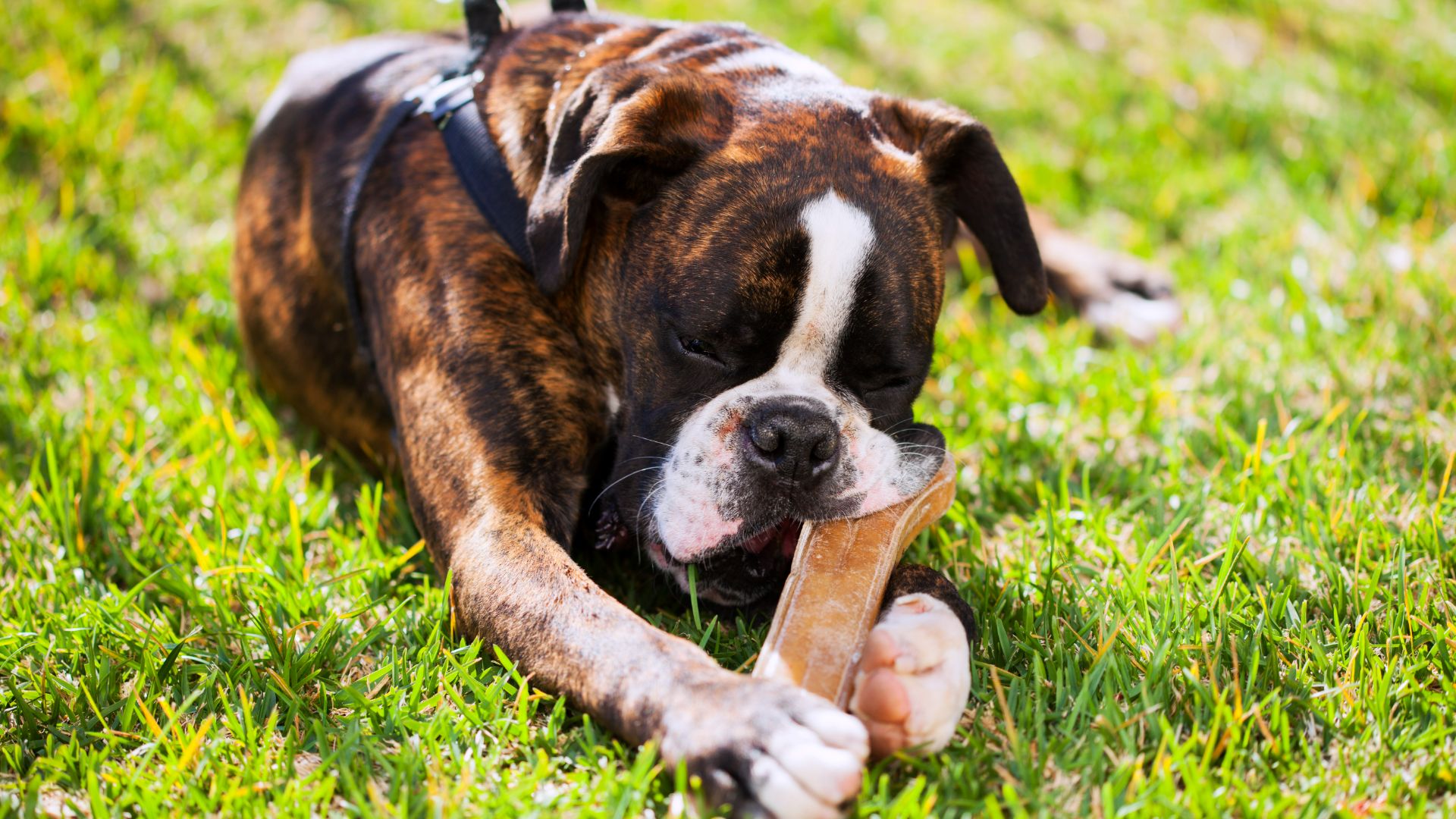
"Coat color in dogs is complex, and we’re still finding the genes responsible for all the coat colors", notes Dr Woodnutt, "For instance, we haven’t yet identified the gene for the thickness of the brindle stripe, which can vary from thin black stripes over the red base all the way to stripes so thick the red is barely visible."
It has been rumored that brindle dogs were bred for hunting purposes. Although we have yet to find any concrete evidence that is true.
Dr. Rebecca MacMillan says, “Lots of different breeds have this fur colouration including boxers, greyhounds, Staffordshire Bull Terriers and French Bulldogs.
“These dogs were all bred for a variety of different purposes, not for hunting in particular. I’m unable to find any information about whether brindle-coloured dogs came about for any specific purpose other than their attractive looks.”

After graduating as a veterinarian from the University of Nottingham, Dr Joanna Woodnutt went on to practice companion animal medicine in the Midlands, UK. Dr Woodnutt is specifically interested in consulting and helping her clients understand their pets better, whether it’s around medical problems such as dermatology, behavior, and nutrition.
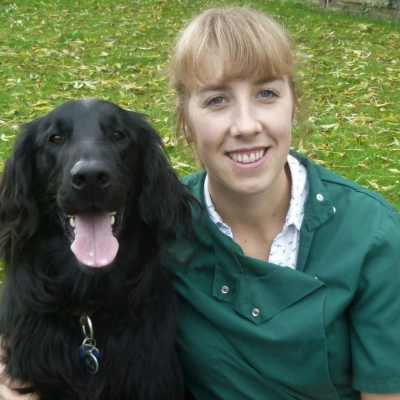
Rebecca is a veterinary surgeon who graduated in 2009 from the Royal Veterinary College in London. She has a wealth of experience in first opinion small animal practice, having done a mixture of day-to-day routine work, on-call emergency duties and managerial roles over the years. Rebecca enjoys medicine in particular and she is proud to have recently achieved a BSAVA postgraduate certificate in small animal medicine (with commendation).
She writes on various feline and canine topics, including behavior, nutrition, and health. Outside of work and writing she enjoys walking her own dog, spending time with her young family and baking!
Edited by Georgia Guerin and Megan Milstead.
Last updated on April 15, 2025.

Our staff writer, Alexis, is a digital content specialist and passionate pet advocate with a background in lifestyle journalism. Raised in a lively home filled with cats, dogs, and fish, she channels her lifelong love for animals into creating helpful, research-driven content for pet parents.
She collaborates with veterinary professionals to ensure accuracy and is currently pursuing additional pet care certifications.
A graduate of Bowling Green State University, Alexis has contributed to major UK and US publications, including Daily Mail, Space.com, and Black Women Rising Magazine.
